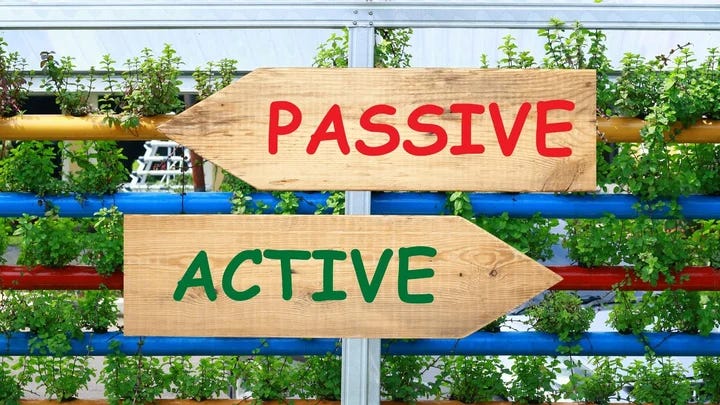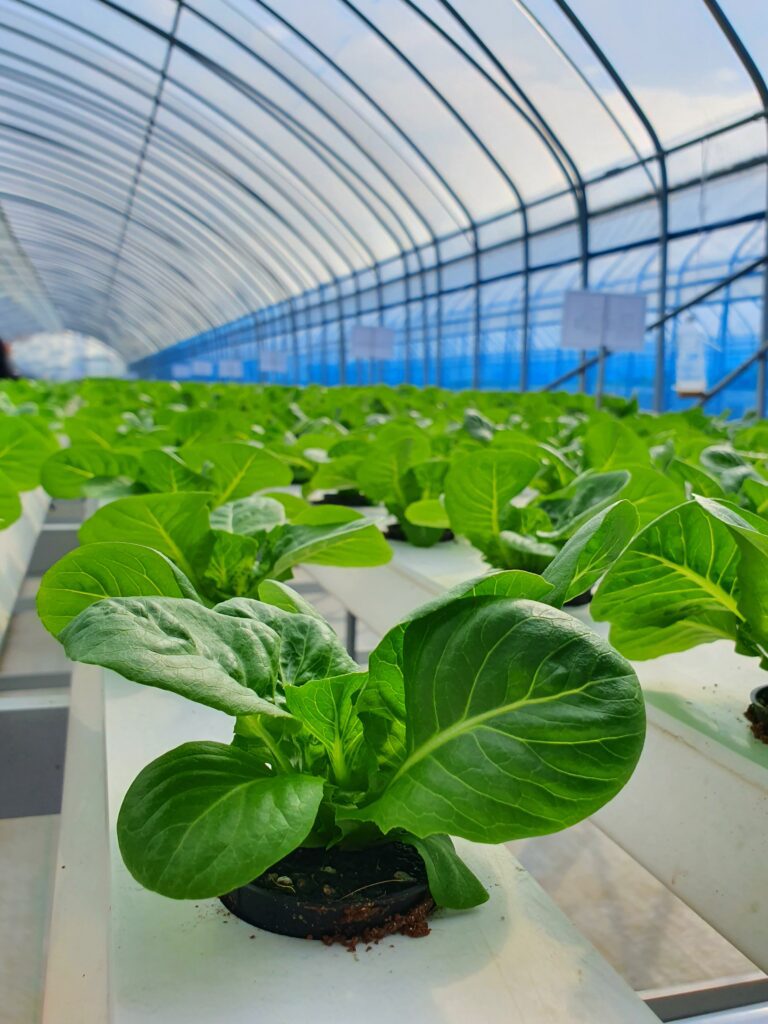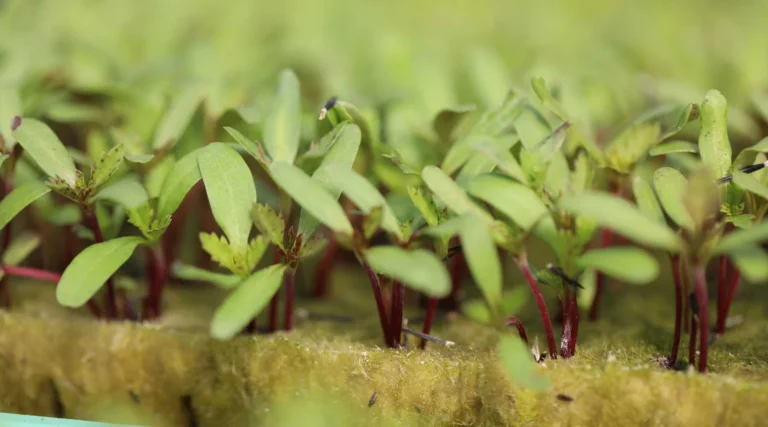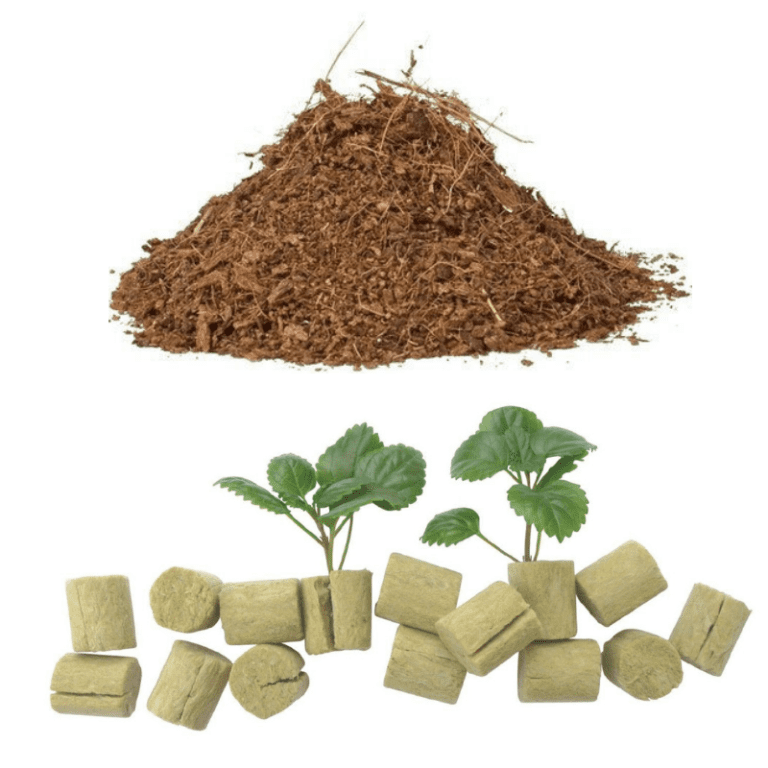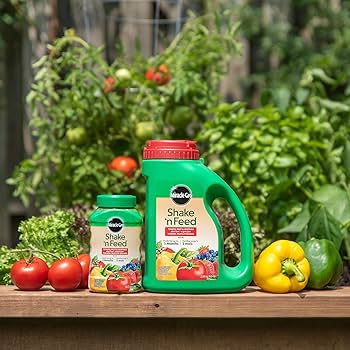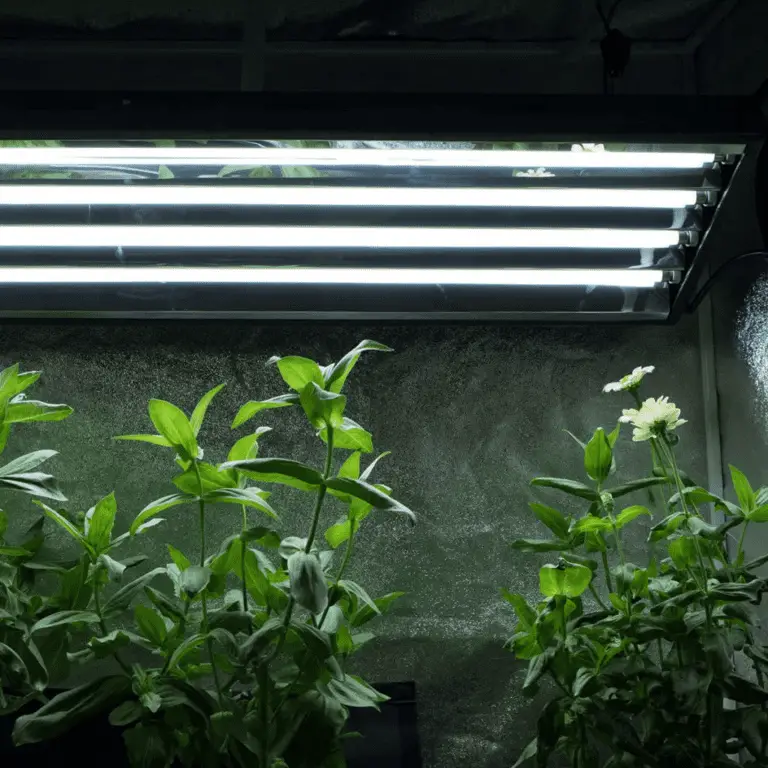Kratky vs DWC Hydroponics: What’s the Difference and Which One is Better?
The Basics of Hydroponics
Hydroponics is an innovative and efficient method of growing plants that relies on water-based nutrient solutions rather than soil. This technique offers numerous advantages, making it an increasingly popular choice among gardening enthusiasts. By eliminating the need for soil, hydroponics allows plants to access nutrients directly, resulting in faster growth rates and higher yields. Additionally, it enables precise control over various environmental factors, such as pH levels and nutrient concentrations, optimizing plant growth and health. With its versatility, hydroponics can be used for a wide range of plants, from leafy greens to fruiting crops. Whether you have limited space, poor soil quality, or simply a desire for year-round gardening, hydroponics offers a viable solution that maximizes yield and minimizes resource use. Through proper management of water, nutrients, and environmental conditions, hydroponics can provide an efficient and sustainable way to grow plants.
To implement hydroponics, a basic understanding of the key components is essential. These include a nutrient reservoir for storing and delivering the nutrient solution, a growing medium to support the plants’ roots, and a water pump or air stone to provide oxygenation. Nutrient solutions need to be carefully formulated to ensure that all essential macronutrients and micronutrients are present in the correct concentrations. pH levels must also be monitored and adjusted regularly to maintain optimal nutrient uptake by the plants. Additionally, adequate lighting and temperature control are crucial for promoting healthy growth. By mastering these fundamental principles, even beginners can embark on their hydroponic journey and enjoy the benefits of this groundbreaking gardening technique.
• Hydroponics is an innovative and efficient method of growing plants that relies on water-based nutrient solutions rather than soil.
• Eliminates the need for soil, allowing plants to access nutrients directly.
• Results in faster growth rates and higher yields.
• Provides precise control over environmental factors such as pH levels and nutrient concentrations.
• Versatile – can be used for a wide range of plants, from leafy greens to fruiting crops.
• Offers a viable solution for limited space, poor soil quality, or year-round gardening needs.
• Maximizes yield and minimizes resource use through proper management of water, nutrients, and environmental conditions.
To implement hydroponics:
– Key components include a nutrient reservoir, growing medium, and oxygenation system (water pump or air stone).
– Nutrient solutions must be carefully formulated with essential macronutrients and micronutrients in correct concentrations.
– Regular monitoring and adjustment of pH levels are necessary for optimal nutrient uptake by the plants.
– Adequate lighting and temperature control are crucial for promoting healthy growth.
By mastering these fundamental principles:
– Even beginners can embark on their hydroponic journey successfully.
The Kratky Method: A Passive Hydroponic System
The Kratky Method is a passive hydroponic system that has gained popularity among gardening enthusiasts in recent years. Developed by Dr. Bernard Kratky at the University of Hawaii, this method offers a simple and cost-effective solution for growing plants without the need for electricity or complicated equipment.
One of the key advantages of the Kratky Method is its simplicity. It involves growing plants in containers filled with a nutrient-rich solution, with the roots partially submerged in the liquid. The plants draw up the nutrients they need as they grow, and the water level gradually decreases over time. This passive system eliminates the need for pumps, airstones, or complex water circulation setups, making it an ideal choice for beginners or those with limited resources. Additionally, the absence of electricity reduces the risk of system failures, making the Kratky Method a reliable and low-maintenance option for hydroponic gardening.
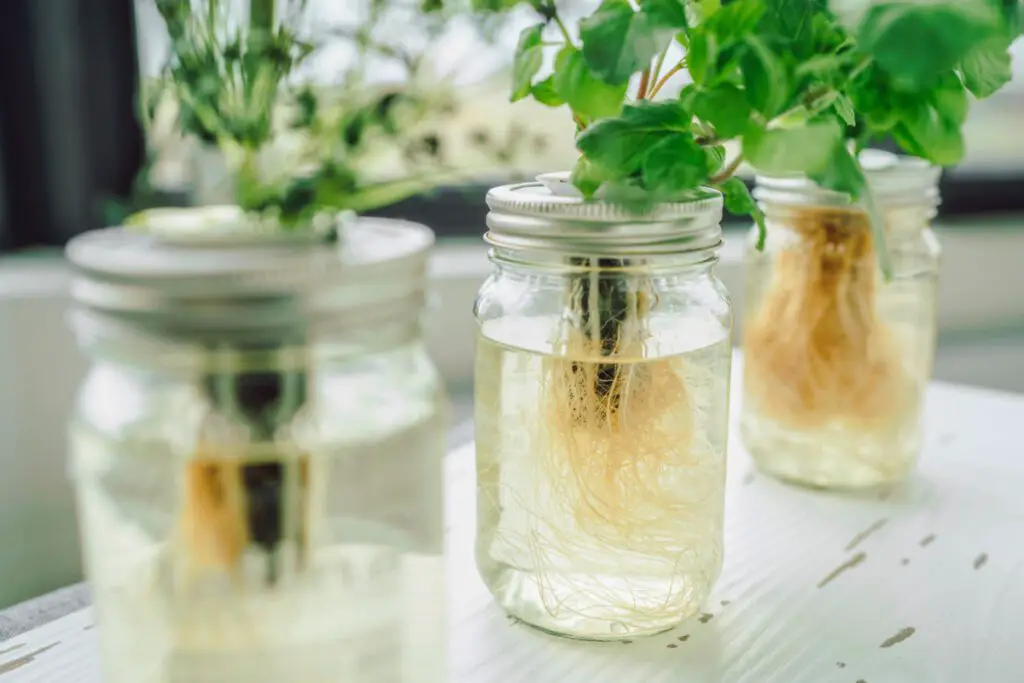
In addition to its simplicity, the Kratky Method also offers flexibility in terms of location. Since it doesn’t rely on electricity or water circulation, this passive system can be easily set up in various environments, including indoor spaces with limited access to natural light or outdoor areas with inconsistent weather conditions. This makes it particularly suitable for urban gardeners, apartment dwellers, or hobbyists looking to maximize their growing space.
Although the Kratky Method is known for its simplicity and ease of use, it is essential to note that it may not be suitable for all plant varieties. Certain plants, such as those with greater water and nutrient demands, may not thrive in this system. It is crucial to research and choose plant varieties that are well-suited for the Kratky Method to ensure optimal growth and yields.
Overall, the Kratky Method offers gardening enthusiasts a straightforward and accessible hydroponic system that can deliver impressive results. Its low cost, simplicity, and flexibility make it an attractive option for beginners and those with limited resources. However, it is important to consider the specific needs of the plants being grown and to adjust the nutrient solution accordingly to achieve the best possible outcomes.
• The Kratky Method is a passive hydroponic system developed by Dr. Bernard Kratky at the University of Hawaii.
• It offers a simple and cost-effective solution for growing plants without electricity or complicated equipment.
• Plants are grown in containers filled with a nutrient-rich solution, with roots partially submerged in the liquid.
• Nutrients are drawn up by the plants as they grow, and water level decreases over time.
• No pumps, airstones, or complex water circulation setups are required, making it ideal for beginners or those with limited resources.
• The absence of electricity reduces the risk of system failures, making it reliable and low-maintenance.
• The Kratky Method can be set up in various environments due to its lack of reliance on electricity or water circulation.
• Suitable for indoor spaces with limited access to natural light or outdoor areas with inconsistent weather conditions.
• Particularly suitable for urban gardeners, apartment dwellers, or hobbyists looking to maximize their growing space.
• Not all plant varieties may thrive in this system due to varying water and nutrient demands.
• Research and choose plant varieties that are well-suited for the Kratky Method to ensure optimal growth and yields.
• Overall, the Kratky Method offers gardening enthusiasts a straightforward and accessible hydroponic system that delivers impressive results.
DWC (Deep Water Culture): An Active Hydroponic System
Deep Water Culture (DWC) is a highly effective active hydroponic system that harnesses the power of oxygen and nutrients to promote optimal plant growth. In this system, plants are suspended in a nutrient-rich solution, allowing their roots to directly access the water and absorb the essential elements they need for development. The key distinguishing feature of DWC is the use of an air pump and air stones to constantly oxygenate the water, ensuring that the roots receive an ample supply of oxygen, which is crucial for their health and vitality.
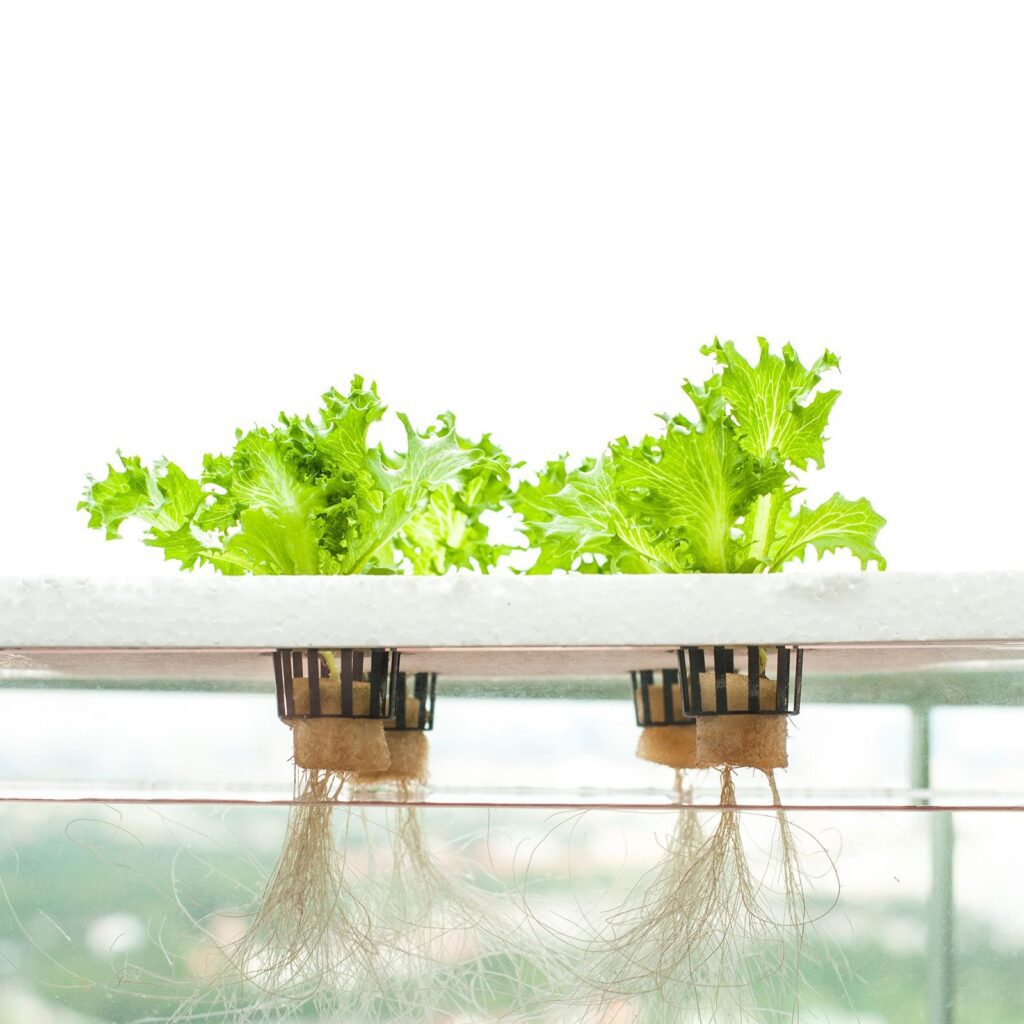
One of the advantages of DWC is its simplicity and ease of use. With the right equipment, setting up a DWC system can be relatively straightforward, making it suitable for both beginners and experienced growers. Additionally, DWC offers excellent control over nutrient delivery, as the concentration of nutrients in the water can be easily adjusted to meet the specific needs of different plant varieties. This provides a flexible and customizable solution, allowing gardeners to achieve optimal growth and maximize yields. Furthermore, DWC is known for promoting rapid vegetative growth and robust root development, resulting in healthier and more productive plants.
• DWC utilizes oxygen and nutrient-rich water to promote optimal plant growth.
• Plants are suspended in a nutrient solution, allowing their roots direct access to essential elements.
• An air pump and air stones continuously oxygenate the water, ensuring healthy root development.
• DWC is simple and easy to set up, making it suitable for beginners and experienced growers alike.
• Nutrient delivery can be easily adjusted for different plant varieties, providing excellent control over growth.
• Rapid vegetative growth and robust root development are promoted by DWC systems.
Key Differences between Kratky and DWC Hydroponics
The Kratky method and DWC (Deep Water Culture) are two popular hydroponic systems with key differences in their design and functionality. One of the main distinctions lies in the way nutrient solution is delivered to the plants. In the Kratky method, plants are grown in a static solution that does not require active circulation or aeration. The plant roots are partially submerged in the solution, with the oxygen needed for root respiration being absorbed from the air trapped in the upper part of the container. Conversely, DWC hydroponics involves a continuously aerated and agitated nutrient solution that circulates around the plant roots. This provides a constant supply of oxygen and nutrients, promoting vigorous growth and optimal plant health.
Another noteworthy difference between the two systems is the level of control over water and nutrient management. In Kratky hydroponics, the nutrient solution is prepared in advance and the plants rely solely on the available water and nutrients until their consumption is completed. With DWC, on the other hand, the nutrient solution is continuously monitored and adjusted to maintain optimal nutrient levels. This allows for precise control over the pH levels, nutrient ratios, and overall nutrient concentration to ensure the plants receive the ideal amount and balance of nutrients at every stage of growth.
These differences in nutrient delivery and management make each system suitable for different growers with varying needs and preferences. While the Kratky method offers simplicity and requires less equipment and maintenance, DWC hydroponics provides greater control and the potential for higher yields. Ultimately, the choice between the two depends on factors such as the grower’s experience, available resources, desired level of involvement, and the specific plants being grown. By understanding these key differences, gardening enthusiasts can make an informed decision and select the hydroponic system that best suits their needs and goals.
• In the Kratky method, plants are grown in a static solution without active circulation or aeration.
• The oxygen needed for root respiration is absorbed from the air trapped in the upper part of the container.
• DWC hydroponics involves continuously aerated and agitated nutrient solution that circulates around plant roots.
• This provides a constant supply of oxygen and nutrients, promoting vigorous growth and optimal plant health.
• In Kratky hydroponics, plants rely solely on available water and nutrients until their consumption is completed.
• With DWC, the nutrient solution is continuously monitored and adjusted to maintain optimal levels.
• This allows for precise control over pH levels, nutrient ratios, and overall concentration at every stage of growth.
• The Kratky method offers simplicity with less equipment and maintenance required.
• DWC hydroponics provides greater control and potential for higher yields.
• Ultimately, choice depends on factors such as grower’s experience, resources available, level of involvement desired,
and specific plants being grown.
Water and Nutrient Management in Kratky Hydroponics
In Kratky hydroponics, water and nutrient management is a crucial aspect of ensuring successful plant growth. Unlike other active hydroponic systems, the Kratky method relies on a passive approach to deliver water and nutrients to the plants. This means that the nutrient solution is added only once at the beginning of the growing cycle, and the plants absorb it gradually over time.
Proper water and nutrient management is key to maintaining the delicate balance required for optimal plant development. It is important to ensure that the nutrient solution is well-mixed, providing all the necessary nutrients in the right proportions. Additionally, monitoring the water level is essential to prevent the plants from drowning or becoming waterlogged.
The Kratky method offers a simpler and more hands-off approach to water and nutrient management compared to other active hydroponic systems. However, it is important to note that this method may not be suitable for all types of plants, especially those with high water and nutrient requirements. Careful consideration of plant selection and nutrient solution formulation is necessary to ensure successful cultivation using the Kratky method.
• The Kratky method of hydroponics relies on a passive approach to deliver water and nutrients to plants.
• Nutrient solution is added only once at the beginning of the growing cycle.
• Plants gradually absorb the nutrient solution over time.
• Proper water and nutrient management is crucial for successful plant growth in Kratky hydroponics.
• The nutrient solution must be well-mixed to provide all necessary nutrients in the right proportions.
• Monitoring the water level is essential to prevent drowning or waterlogging of plants.
• The Kratky method offers a simpler and more hands-off approach compared to other active hydroponic systems.
• Not all types of plants may be suitable for cultivation using this method, especially those with high water and nutrient requirements.
Water and Nutrient Management in DWC Hydroponics
DWC hydroponics, also known as Deep Water Culture, is an active hydroponic system that requires careful management of water and nutrients. In DWC systems, the plant roots are submerged in a nutrient-rich water solution, ensuring continuous access to nutrients. However, maintaining the proper balance of water and nutrients is crucial for the success of the system.
When it comes to water management in DWC hydroponics, it is essential to monitor the water level regularly. As plants take up water through their roots, the water level in the nutrient reservoir decreases. To maintain optimal growth conditions, it is necessary to replenish the water regularly. Additionally, proper oxygenation of the water is vital to ensure healthy root development. Oxygen can be supplied through the use of air stones or diffusers, which help prevent root rot and promote vigorous growth.
Nutrient management in DWC hydroponics involves maintaining the right balance of essential elements for plant growth. It is important to monitor the nutrient concentrations in the water solution regularly. Testing the pH levels, as well as the concentrations of nitrogen, phosphorus, and potassium, is crucial to preventing nutrient deficiencies or toxicities. Adjustments can be made by adding specific nutrient solutions or changing the water solution entirely. Proper nutrient management ensures that plants receive the necessary elements to thrive and produce high-quality yields.
• Regularly monitor the water level in the nutrient reservoir and replenish as needed
• Ensure proper oxygenation of the water through air stones or diffusers to prevent root rot
• Test pH levels and concentrations of nitrogen, phosphorus, and potassium regularly
• Make adjustments to nutrient concentrations as necessary to prevent deficiencies or toxicities
• Add specific nutrient solutions or change the water solution entirely for optimal plant growth
• Proper nutrient management ensures healthy plants and high-quality yields.
Plant Support and Root Structure in Kratky Hydroponics
Kratky hydroponics is a passive hydroponic system that does not require any pumps or electricity. One important aspect to consider in this type of system is the plant support and root structure. Since the plants are not rooted in a growing medium, their support becomes essential to prevent them from falling over and sustaining damage.
To provide adequate support, it is recommended to use sturdy containers, such as buckets or plastic bins, to hold the nutrient solution. These containers should be of an appropriate size to accommodate the plant’s root system and promote healthy growth. Additionally, it is advisable to use a trellis or stakes to support the plants and keep them upright. This is particularly important for plants that tend to grow tall or have weak stems.
In terms of root structure, Kratky hydroponics encourages the development of long and strong roots. In traditional soil-based gardening, root growth is restricted by the availability of nutrients. However, in a hydroponic system, the nutrient solution is readily available, allowing the roots to expand freely. This promotes the development of a robust root system that enhances nutrient uptake and overall plant health. It is important to note that the solution level should decrease over time as the plant consumes the nutrients, which encourages the roots to grow longer in search of water and nutrients.
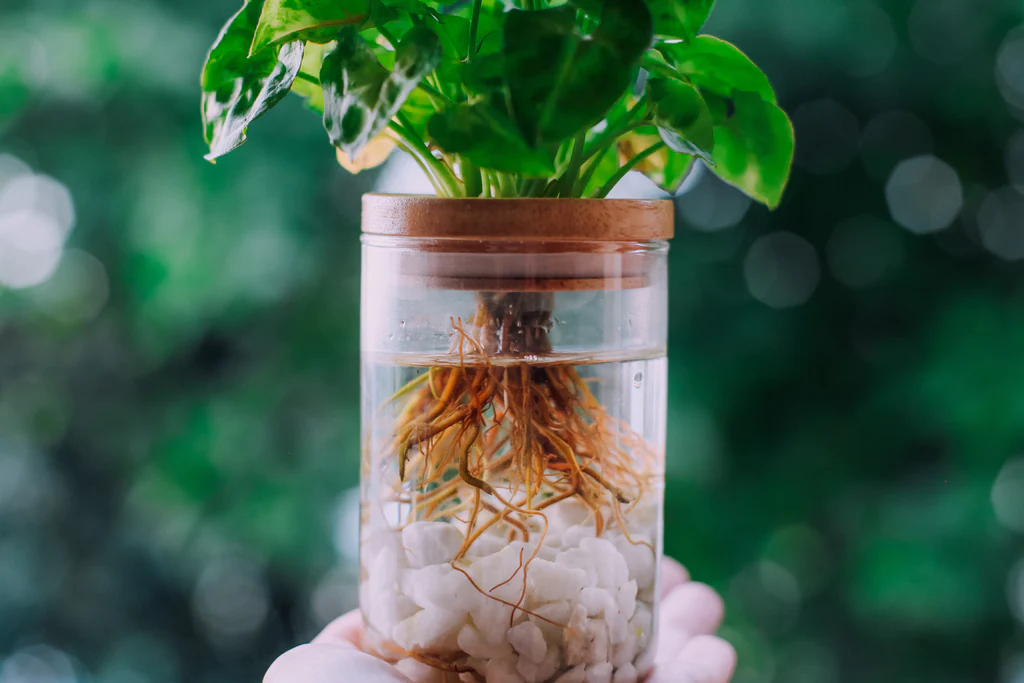
By understanding the importance of plant support and root structure in Kratky hydroponics, gardeners can ensure the stability and optimal growth of their plants. The right combination of support structures and root development will contribute to healthy and productive plants in this passive hydroponic system.
• Sturdy containers, such as buckets or plastic bins, should be used to hold the nutrient solution.
• The containers should be of an appropriate size to accommodate the plant’s root system and promote healthy growth.
• A trellis or stakes should be used to support plants and keep them upright, especially for tall plants or those with weak stems.
• Kratky hydroponics encourages the development of long and strong roots.
• In a hydroponic system, the nutrient solution is readily available, allowing roots to expand freely.
• This promotes the development of a robust root system that enhances nutrient uptake and overall plant health.
• The solution level in Kratky hydroponics should decrease over time as nutrients are consumed by the plant.
This encourages roots to grow longer in search of water and nutrients.
Plant Support and Root Structure in DWC Hydroponics
In DWC hydroponics, plant support and root structure play a crucial role in ensuring the overall health and productivity of the plants. Since the roots are submerged in a nutrient-rich solution, it is important to provide adequate support to prevent them from entangling and potentially suffocating the plant.
One of the most common methods of plant support in DWC hydroponics is using net pots. These pots have holes that allow the roots to grow through while providing support to the plant above. The net pots are typically filled with an inert growing medium, such as clay pebbles or rockwool, which provides stability to the plants and allows for oxygenation of the root zone.
To encourage proper root structure, it is recommended to periodically trim the roots in DWC hydroponics. This practice helps to prevent the roots from becoming excessively tangled and promotes healthier root growth. Properly pruned roots can efficiently absorb nutrients and water, leading to better overall plant health and improved yields.
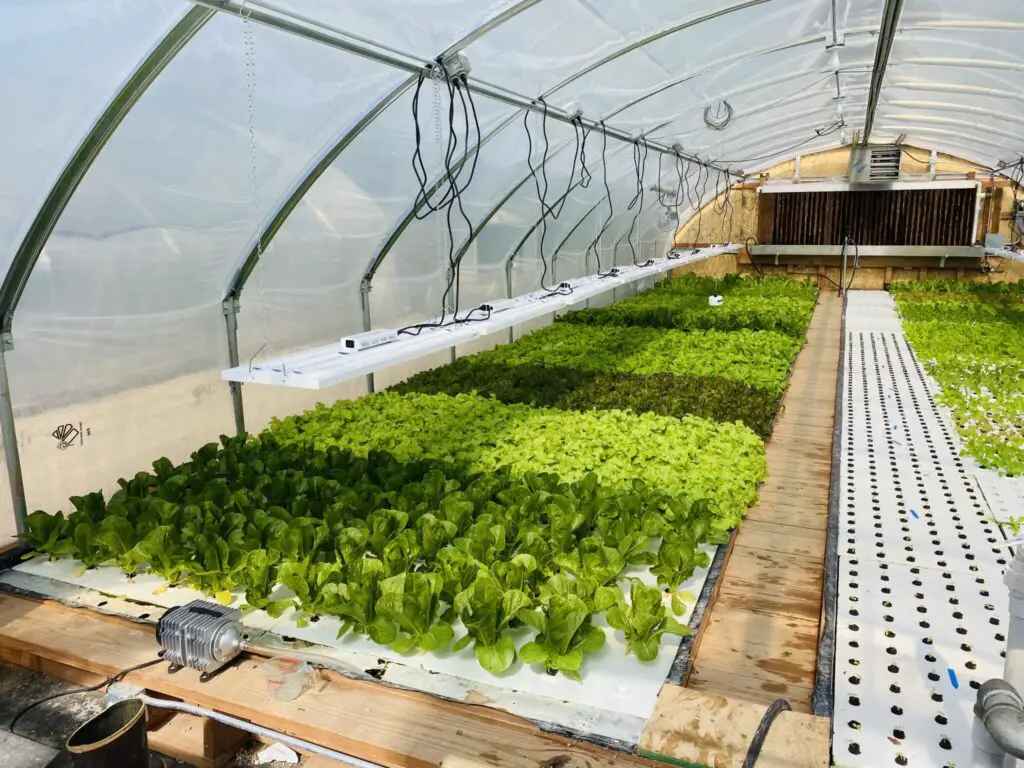
Overall, in DWC hydroponics, ensuring proper plant support and root structure is essential for maximizing the potential of your plants and achieving optimal growth. By using net pots and regularly trimming the roots, you can help create a favorable environment for your plants to thrive.
• Net pots are commonly used for plant support in DWC hydroponics.
• Net pots have holes that allow the roots to grow through while providing support to the plant above.
• Inert growing mediums such as clay pebbles or rockwool are typically used in net pots to provide stability and oxygenation.
• Periodically trimming the roots in DWC hydroponics helps prevent excessive tangling and promotes healthier root growth.
• Properly pruned roots can efficiently absorb nutrients and water, leading to better overall plant health and improved yields.
Maintenance and Monitoring in Kratky Hydroponics
Maintenance and monitoring are crucial aspects of successful Kratky hydroponics. Regular maintenance ensures that the system remains in optimal condition, while monitoring allows growers to identify any issues or potential problems early on. To effectively maintain and monitor a Kratky hydroponic system, there are several key tasks that gardeners should prioritize.
First and foremost, it is necessary to periodically check the water level in the reservoir. As the plants absorb water, the level will gradually decrease. Maintaining the correct water level is critical for the health and growth of the plants. Additionally, it is important to regularly inspect the roots of the plants to ensure they are healthy and free from any signs of diseases or pests. This can be done by gently lifting the plants and examining the roots for discoloration, rot, or any unusual growth.
In addition to these tasks, monitoring the nutrient levels in the reservoir is essential. The nutrient solution provides the plants with the necessary minerals and elements for their growth. Testing the nutrient levels using appropriate kits or meters will help determine whether adjustments need to be made to maintain an optimal balance. Furthermore, keeping an eye on the pH level of the solution is important, as it can affect nutrient uptake. Regular monitoring of pH levels will allow growers to make any necessary adjustments to maintain the ideal pH range for the specific plant varieties being grown.
In conclusion, regular maintenance and monitoring are indispensable for successful Kratky hydroponics. By prioritizing tasks such as checking water levels, inspecting roots, and monitoring nutrient and pH levels, gardeners can ensure the health and productivity of their plants. Incorporating these practices into a maintenance and monitoring routine will contribute to a thriving Kratky hydroponic system.
• Periodically check the water level in the reservoir to maintain optimal conditions for plant growth.
• Regularly inspect the roots of the plants for signs of disease or pests.
• Monitor nutrient levels in the reservoir to ensure plants receive necessary minerals and elements.
• Test nutrient levels using appropriate kits or meters to determine if adjustments are needed.
• Keep an eye on pH levels of the solution as it can affect nutrient uptake.
• Make necessary adjustments to maintain ideal pH range for specific plant varieties being grown.
Watch the video for more information about the Kratky and DWP Hydroponics.
Maintenance and Monitoring in DWC Hydroponics
Maintenance and monitoring are crucial aspects of DWC hydroponics that ensure the optimal growth and health of plants. Regular maintenance involves checking the water levels, pH levels, and nutrient concentrations in the system to ensure they are within the appropriate range. It is important to monitor these parameters closely as any imbalance can negatively impact plant growth and lead to nutrient deficiencies or toxicities.
Maintaining a clean and hygienic environment is also essential in DWC hydroponics. Regularly cleaning and sterilizing the reservoir, air stones, and other equipment help prevent the buildup of algae, bacteria, and other pathogens that can harm the plants. Additionally, proper monitoring of the root health is necessary. Checking for root diseases, such as root rot, and addressing them promptly can prevent the spread of diseases and save the plants from potential damage.
By regularly maintaining and monitoring the DWC hydroponic system, growers can identify and address any issues or imbalances that may arise. This proactive approach allows for prompt adjustments and ensures the plants have the best conditions for healthy growth.
• Regularly check water levels, pH levels, and nutrient concentrations in the system.
• Ensure that these parameters are within the appropriate range to avoid imbalances.
• Imbalances can negatively impact plant growth and lead to nutrient deficiencies or toxicities.
• Maintain a clean and hygienic environment in DWC hydroponics.
• Clean and sterilize the reservoir, air stones, and other equipment regularly to prevent buildup of algae, bacteria, and pathogens.
• Monitor root health closely for any signs of diseases like root rot.
• Promptly address any root diseases to prevent further spread and damage to plants.
Advantages and Disadvantages of Kratky Hydroponics
Advantages:
Kratky hydroponics offers several advantages that make it a popular choice among gardening enthusiasts. One of the main benefits is its simplicity and low cost. Unlike other hydroponic systems that require pumps, timers, and complex nutrient management, the Kratky method is a passive system that requires minimal equipment and maintenance. This makes it ideal for beginners or those with limited space and resources.
Another advantage of Kratky hydroponics is its water efficiency. The system utilizes a static nutrient solution that gradually decreases as the plants absorb the water. This means that there is no water wastage or need for constant monitoring and adjustment of nutrient levels. Additionally, the lack of water movement reduces the risk of diseases and pests, making it a more sustainable and environmentally-friendly option for gardeners.
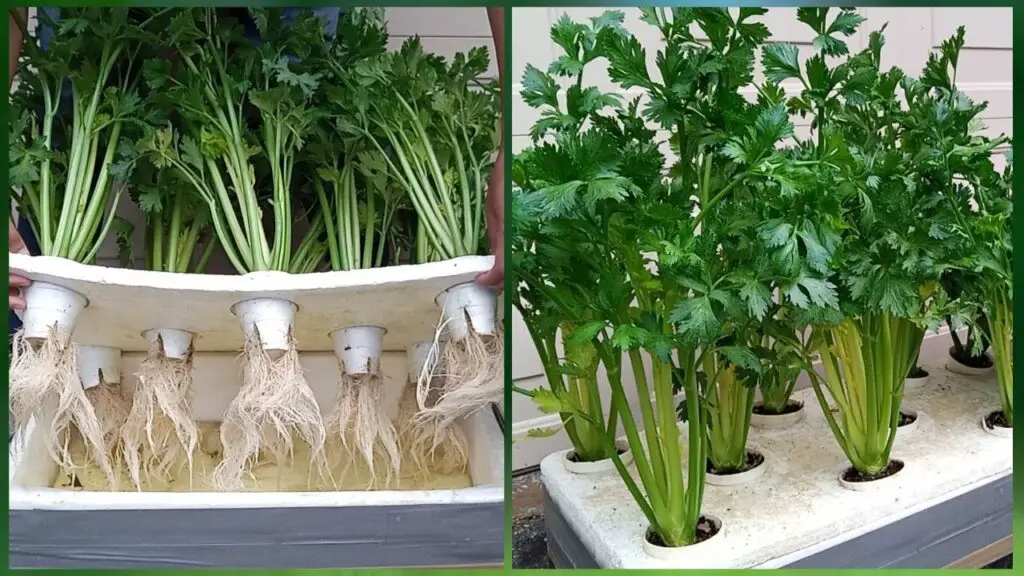
Disadvantages:
While Kratky hydroponics has its benefits, there are also some limitations to consider. Firstly, this method is not suitable for all types of plants. Certain crops with longer growing periods or higher nutrient requirements may not thrive in the static nutrient solution. Additionally, the lack of aeration in the Kratky system can lead to oxygen deficiencies in the root zone, affecting the overall health and growth of the plants. This can be especially problematic in warmer climates or during the summer months when water temperatures can rise.
Furthermore, the inability to adjust nutrient levels in the Kratky method can make it challenging to optimize plant growth and yield. Unlike other hydroponic systems that allow for precise control over nutrient ratios, pH levels, and EC levels, the Kratky method relies on a predetermined nutrient solution. This lack of flexibility may hinder the ability to tailor the growing conditions to the specific needs of different plant species.
Advantages:
• Simplicity and low cost
• Minimal equipment and maintenance required
• Ideal for beginners or those with limited space and resources
• Water-efficient system with no water wastage
• Reduced risk of diseases and pests
Disadvantages:
• Not suitable for all types of plants, especially those with longer growing periods or higher nutrient requirements
• Lack of aeration can lead to oxygen deficiencies in the root zone, affecting plant health and growth
• Challenging to optimize plant growth and yield due to inability to adjust nutrient levels
• Limited flexibility in tailoring growing conditions to different plant species’ needs
Advantages and Disadvantages of DWC Hydroponics
DWC (Deep Water Culture) hydroponics is an active hydroponic system that offers several advantages for growers. One of the main advantages is its simplicity and ease of use. Unlike other hydroponic systems that require complex setups and constant adjustments, DWC hydroponics involves placing the plants in a nutrient-rich solution and maintaining a stable water level. This means less time spent on maintenance and more time focused on other gardening tasks. Additionally, DWC hydroponics allows for better oxygenation of the roots, promoting faster growth and healthier plants. The constant supply of oxygen to the roots ensures efficient nutrient absorption, leading to higher yields and stronger plant development. With DWC hydroponics, growers can expect faster growth rates and consistent harvests year-round.
However, like any hydroponic system, DWC has its disadvantages. One of the main drawbacks is the dependency on electricity and water pumps. Without a continuous supply of power, the plants’ roots may lack oxygen, which can lead to root rot and other diseases. Additionally, maintaining a stable water temperature can be challenging, as DWC systems are prone to overheating. Consistent monitoring of water pH and nutrient levels is also crucial, as imbalances can impact plant health. Lastly, the initial setup cost for a DWC system can be higher compared to other hydroponic options, as it requires specific equipment such as air pumps, air stones, and water reservoirs.
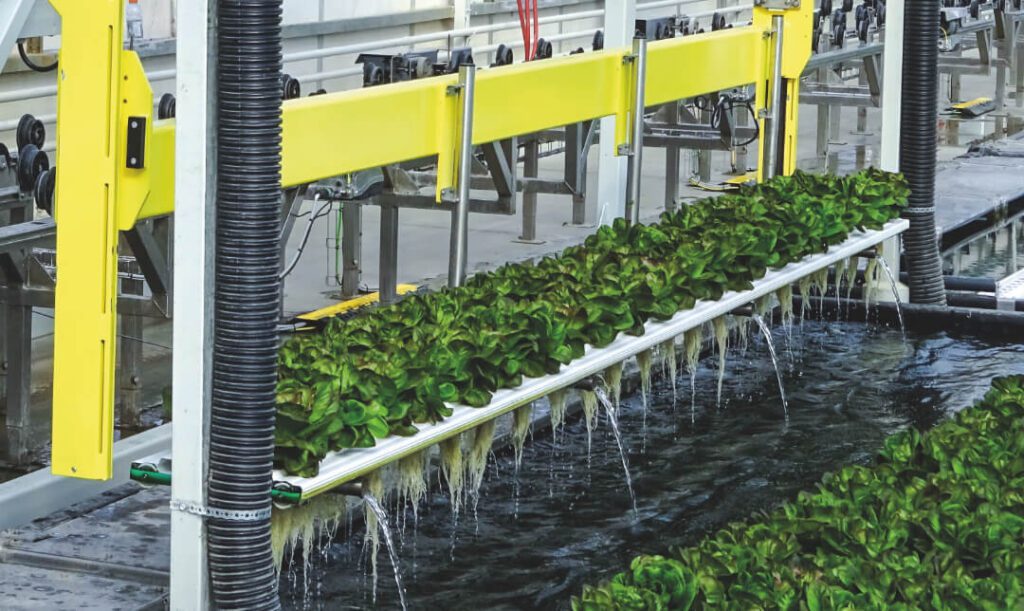
Despite these disadvantages, DWC hydroponics remains a popular choice among experienced growers due to its simplicity, high yields, and efficient use of space. By carefully managing the system and addressing its potential drawbacks, growers can maximize the benefits of DWC hydroponics and achieve impressive results.
Advantages of DWC Hydroponics:
• Simplicity and ease of use
• Less time spent on maintenance
• Better oxygenation of the roots
• Faster growth rates and healthier plants
• Consistent harvests year-round
Disadvantages of DWC Hydroponics:
• Dependency on electricity and water pumps
• Challenging to maintain stable water temperature
• Requires consistent monitoring of pH and nutrient levels
• Higher initial setup cost compared to other hydroponic options
Despite the disadvantages, DWC hydroponics remains popular due to its simplicity, high yields, and efficient use of space. By carefully managing the system and addressing potential drawbacks, growers can achieve impressive results with DWC hydroponics.
Factors to Consider When Choosing Between Kratky and DWC Hydroponics
When choosing between Kratky and DWC hydroponics, there are several key factors to consider. One important factor is the level of involvement and maintenance required. Kratky hydroponics is a passive system that requires minimal monitoring and maintenance once set up, making it a great option for beginners or those with limited time. On the other hand, DWC hydroponics is an active system that requires regular monitoring of water levels and nutrient concentrations to ensure optimal plant growth. This may be more suitable for advanced growers who enjoy the hands-on aspect of hydroponic gardening.
Another factor to consider is the size and space available for your hydroponic setup. Kratky hydroponics is a compact system that can be easily scaled to fit any space, making it ideal for small gardens or indoor gardening. In contrast, DWC hydroponics requires a larger space to accommodate the reservoir and air pump, making it more suitable for larger garden areas or commercial operations.
In addition to maintenance and space considerations, it is also important to think about the specific plants you want to grow. Some plants, particularly those with larger root systems, may thrive better in a DWC system where they have constant access to oxygen and nutrients. On the other hand, Kratky hydroponics can be a suitable option for smaller plants or those with shallow root systems.
Overall, the choice between Kratky and DWC hydroponics will depend on your personal preferences, available resources, and the specific plants you want to grow. By carefully considering these factors, you can make an informed decision and select the hydroponic system that best suits your needs and goals.
• Level of involvement and maintenance required:
– Kratky hydroponics: passive system, minimal monitoring and maintenance
– DWC hydroponics: active system, regular monitoring of water levels and nutrient concentrations
• Size and space available for the hydroponic setup:
– Kratky hydroponics: compact system, easily scalable to fit any space
– DWC hydroponics: requires larger space for reservoir and air pump
• Specific plants you want to grow:
– DWC hydroponics: better for plants with larger root systems, constant access to oxygen and nutrients
– Kratky hydroponics: suitable for smaller plants or those with shallow root systems
By considering these factors, you can make an informed decision on whether to choose Kratky or DWC hydroponics based on your personal preferences, available resources, and the specific plants you want to grow.
Here is a table that shows us the factors we need to consider while choosing between Kratky nad DWP Hydroponics:
| Factor | Kratky | DWC |
|---|---|---|
| Electricity | No electricity required | Requires electricity |
| Maintenance | Low maintenance | High maintenance |
| Cost | Minimal cost | Higher cost |
| Setup | Easy to set up | Easy to set up |
| Temperature control | Harder to control | Easier to control |
| Water stagnation | Less problematic | More problematic |
| Plant variety | Limited | Diverse |
| Yield | Lower yield | Higher yield |
Comparing Growth Rates and Yields in Kratky and DWC Hydroponics
Comparing Growth Rates and Yields in Kratky and DWC Hydroponics
When it comes to hydroponic systems, one of the most important factors to consider is the growth rates and yields that can be achieved. In this section, we will compare the growth rates and yields in two popular hydroponic systems: Kratky and DWC.
In the Kratky method, plants are grown in a non-circulating nutrient solution, which means that the water and nutrients are not replenished throughout the growing cycle. This method relies on the plant’s ability to take up nutrients as the water level gradually decreases. While this passive system requires minimal maintenance, it may result in slower growth rates and lower yields compared to more active hydroponic systems.
On the other hand, DWC (Deep Water Culture) is an active hydroponic system where plants are suspended in a nutrient-rich solution with a constant flow of oxygen. This method provides plants with a continuous supply of water and nutrients, promoting faster growth rates and potentially higher yields. With the active nature of DWC, growers have more control over the nutrient levels and can easily adjust them to optimize plant growth.
It’s important to note that growth rates and yields can vary depending on various factors such as plant species, environmental conditions, nutrient concentrations, and grower expertise. Therefore, it’s essential to consider these variables when comparing the growth rates and yields in Kratky and DWC hydroponics.
• In the Kratky method, plants are grown in a non-circulating nutrient solution.
• The water and nutrients are not replenished throughout the growing cycle.
• This passive system requires minimal maintenance.
• Slower growth rates and lower yields may be observed compared to more active hydroponic systems.
• DWC (Deep Water Culture) is an active hydroponic system.
• Plants are suspended in a nutrient-rich solution with a constant flow of oxygen.
• This method provides plants with a continuous supply of water and nutrients.
• It promotes faster growth rates and potentially higher yields.
Factors that can affect growth rates and yields:
– Plant species
– Environmental conditions
– Nutrient concentrations
– Grower expertise
It’s important for growers to consider these variables when comparing the growth rates and yields in Kratky and DWC hydroponics.
Here is a table that shows the different growth rates of Kratky and DWP Hydroponics:
| Aspect | Kratky Hydroponics | DWC Hydroponics |
|---|---|---|
| Growth Rate | Slower initial growth, accelerates over time | Generally faster and consistent |
| Yield | Moderate yield | Higher potential yield |
| Suitable Plants | Herbs (Basil, Cilantro), Lettuces (Lettuce, Spinach), Some smaller plants (Strawberries) | Wide range including Herbs, Leafy Greens, Fruiting Plants (Tomatoes, Peppers), Larger plants (Cucumbers, Zucchini) |
Suitability of Kratky Hydroponics for Beginners
Kratky hydroponics is a popular choice among beginners due to its simplicity and low maintenance requirements. This passive hydroponic system was developed by Dr. Bernard Kratky and is known for its hands-off approach to growing plants without the need for electricity or pumps.
One of the main advantages of Kratky hydroponics for beginners is its ease of setup. Unlike other hydroponic systems that require complex equipment and precise nutrient solutions, Kratky hydroponics involves using a single container filled with a nutrient-rich solution. The plant is placed in a net pot, its roots submerged in the solution, and a lid is placed on top to create a closed environment. This simplicity makes it an ideal choice for those who are new to hydroponic gardening and want to start small without investing in expensive equipment or spending a lot of time on maintenance.
In addition to being easy to set up, Kratky hydroponics also requires minimal monitoring and maintenance. Because the nutrient solution is not recirculated, there is no need to constantly monitor pH levels or adjust nutrient concentrations. The plants take up the nutrients they need as the solution level decreases, and as long as the container is kept filled, the plants will continue to thrive. This hands-off approach is particularly appealing to beginners who may not have the time or the knowledge to constantly monitor and adjust their hydroponic setup.
• Kratky hydroponics is a passive system that requires no electricity or pumps.
• The setup involves using a single container filled with nutrient-rich solution.
• The plant’s roots are submerged in the solution, and a lid is placed on top to create a closed environment.
• This simplicity makes it ideal for beginners who want to start small without investing in expensive equipment.
• Kratky hydroponics requires minimal monitoring and maintenance compared to other systems.
• There is no need to constantly monitor pH levels or adjust nutrient concentrations.
• Plants take up nutrients as the solution level decreases, as long as the container is kept filled.
Suitability of DWC Hydroponics for Advanced Growers
DWC (Deep Water Culture) hydroponics is an advanced system that offers several advantages for experienced growers. Its active nature requires a higher level of involvement and monitoring, making it ideal for those who have a solid understanding of hydroponic principles and are willing to devote more time and effort to their plants.
One of the main reasons why DWC hydroponics is suitable for advanced growers is its enhanced control over nutrient delivery. In this system, the plant roots are submerged in a nutrient-rich solution, allowing them to directly access the required elements for optimal growth. This precise control over nutrient levels enables advanced growers to fine-tune the feeding regimen and tailor it to the specific needs of different plant varieties, resulting in superior yields and overall plant health. Additionally, DWC hydroponics allows for easy adjustments and modifications to the nutrient solution, facilitating the optimization of nutrient ratios and addressing any deficiencies or imbalances promptly.
Furthermore, the active nature of DWC hydroponics demands advanced upkeep and monitoring. Growers need to regularly check and adjust the oxygen levels in the system to avoid root rot and ensure proper plant respiration. Maintaining an optimal pH range is also crucial, as any fluctuations can impede nutrient uptake and negatively impact plant health. Advanced growers are well-equipped to handle such intricacies, possessing the knowledge and experience necessary to troubleshoot and resolve any issues that may arise.
In conclusion, DWC hydroponics offers advanced growers a remarkable level of control over nutrient delivery and allows them to fine-tune the feeding regimen according to the specific needs of their plants. Its active nature and demanding upkeep make it an ideal choice for experienced hydroponic enthusiasts who are willing to invest the required time and effort into achieving exceptional yields and plant health.
• DWC hydroponics offers enhanced control over nutrient delivery
• Allows for fine-tuning of feeding regimen based on specific plant needs
• Easy adjustments and modifications to the nutrient solution
• Facilitates optimization of nutrient ratios and addressing deficiencies or imbalances promptly
• Requires advanced upkeep and monitoring
• Regular checking and adjusting of oxygen levels to avoid root rot
• Maintaining optimal pH range crucial for proper nutrient uptake
• Advanced growers possess the knowledge and experience to troubleshoot any issues that may arise.
Conclusion: Identifying the Most Suitable Hydroponic System for Your
When it comes to choosing the most suitable hydroponic system for your needs, it is important to carefully consider a variety of factors. Both the Kratky method and DWC hydroponics have their own unique advantages and disadvantages, and understanding these distinctions can help you make an informed decision.
The Kratky method offers a passive hydroponic system that requires little to no electricity or active water circulation. This makes it a popular choice for beginners or those with limited resources. On the other hand, DWC hydroponics provides an active system with continuous oxygenation and nutrient circulation, resulting in faster growth rates and higher yields. However, it requires more maintenance and monitoring compared to the Kratky method.
In the end, the decision of which hydroponic system to choose depends on your specific goals, resources, and level of expertise. Are you looking for a low-maintenance system or are you willing to invest more time and effort for higher yields? Consider the factors discussed in this article and choose the hydroponic system that aligns best with your needs and preferences.
• Carefully consider a variety of factors when choosing a hydroponic system
• The Kratky method is a passive system that requires little electricity or water circulation
• DWC hydroponics provides an active system with continuous oxygenation and nutrient circulation
• The Kratky method is popular for beginners or those with limited resources
• DWC hydroponics results in faster growth rates and higher yields, but requires more maintenance
• Consider your specific goals, resources, and level of expertise when making a decision
What is hydroponics?
Hydroponics is a method of growing plants without soil, where the plants are instead grown in a nutrient-rich water solution.
What are the advantages of hydroponics?
Some advantages of hydroponics include faster growth rates, higher yields, efficient use of water and nutrients, and the ability to grow plants in areas with limited space or poor soil quality.
What is the Kratky method?
The Kratky method is a passive hydroponic system that requires no electricity or pumps. It involves placing plants in containers filled with a nutrient solution, allowing the roots to grow into the solution as it gradually depletes.
What is DWC hydroponics?
DWC (Deep Water Culture) is an active hydroponic system where plants are suspended in a nutrient-rich water solution with the help of an air pump. The roots are submerged in the solution, allowing for constant oxygenation.
How does water and nutrient management differ in Kratky and DWC hydroponics?
In Kratky hydroponics, the water and nutrient solution is placed in a container and left untouched until it depletes. In DWC hydroponics, the water and nutrient solution needs to be monitored and adjusted regularly to maintain proper levels.
What is the difference in plant support and root structure between Kratky and DWC hydroponics?
In Kratky hydroponics, plants rely on buoyancy and the initial nutrient solution level to support their roots. In DWC hydroponics, plants have their roots submerged in the water solution with the help of a support structure, such as a net pot.
How does maintenance and monitoring differ in Kratky and DWC hydroponics?
Kratky hydroponics requires minimal maintenance and monitoring as the nutrient solution gradually depletes. DWC hydroponics requires regular monitoring of water levels, pH, and nutrient concentrations, as well as cleaning and maintaining the air pump.
What are the advantages of Kratky hydroponics?
Some advantages of Kratky hydroponics include its simplicity, low cost, and the ability to grow plants without the need for electricity or pumps.
What are the advantages of DWC hydroponics?
Some advantages of DWC hydroponics include faster growth rates, higher yields, precise control over nutrient levels, and the ability to grow a wide variety of plants.
What factors should be considered when choosing between Kratky and DWC hydroponics?
Factors such as available space, desired plant types, level of experience, time commitment, and budget should be considered when choosing between Kratky and DWC hydroponics.
Which hydroponic system is more suitable for beginners?
Kratky hydroponics is generally considered more suitable for beginners due to its simplicity and low maintenance requirements.
Which hydroponic system is more suitable for advanced growers?
DWC hydroponics is more suitable for advanced growers, as it allows for more precise control over nutrient levels and requires regular monitoring and adjustments.
How do growth rates and yields compare between Kratky and DWC hydroponics?
DWC hydroponics often results in faster growth rates and higher yields compared to Kratky hydroponics, due to the constant oxygenation and precise control over nutrient levels.
What hydroponic system is recommended for a grower with limited experience?
Kratky hydroponics is recommended for growers with limited experience, as it requires less monitoring and adjustments compared to DWC hydroponics.
What hydroponic system is recommended for a grower looking for maximum control over nutrient levels?
DWC hydroponics is recommended for growers looking for maximum control over nutrient levels, as it allows for precise adjustments to be made.
How can I determine the most suitable hydroponic system for my needs?
To determine the most suitable hydroponic system, consider factors such as your level of experience, available space, desired plant types, budget, and the amount of time you are willing to commit to maintenance and monitoring.

